Electronic Design Dice
A warm-up for creative thinking!
Problem:
I often look forward to sketching, doodling and art as a means of regenerating after a tiring or stressful day. After being knackered or worn out, my state of mind is such that I have fairly unimaginative thoughts and generally feel quite blank. (This is much like how we feel lazy to begin a workout after a long day but know that once its done, we will feel a lot better!)
Hence, something like a creative ‘warm-up’ is needed at times like these to help get the creative thinking hat on!
Objective:
To conceptualise, design and prototype a device that can be used to generate randomised (not necessarily realistic: sometimes even quite humorous) pseudo design prompts. These prompts can then be used to quickly sketch ideas from and get the creative juices flowing. The device must be:
– Easily accessible.
– Physical (i.e. not software based) as I deem this interaction a key part of my (productive) creative thought process.
– Low powered or not require frequent charging.
– Easy to update with new prompts or make changes.
– Build upon the ‘designdice’ already available.
– Remind the user of real dice and the process of throwing / rolling them.
– Be compact enough to not occupy a large desk footprint.
A product named ‘designdice’ is already available, however this product aims more at providing design themes relevant to a project and does not provide specific design prompts / briefs. Also, ‘designdice’ is not aimed as a recreational product which this project is.
I began by sketching some initial ideas. I was extremely keen on keeping to the form, textures and shapes of traditional dice. This meant flat edges, rounded corners and a generally square shape. This led me into the direction of arcade machines which fit with the recreational / fun theme this project is intended towards.
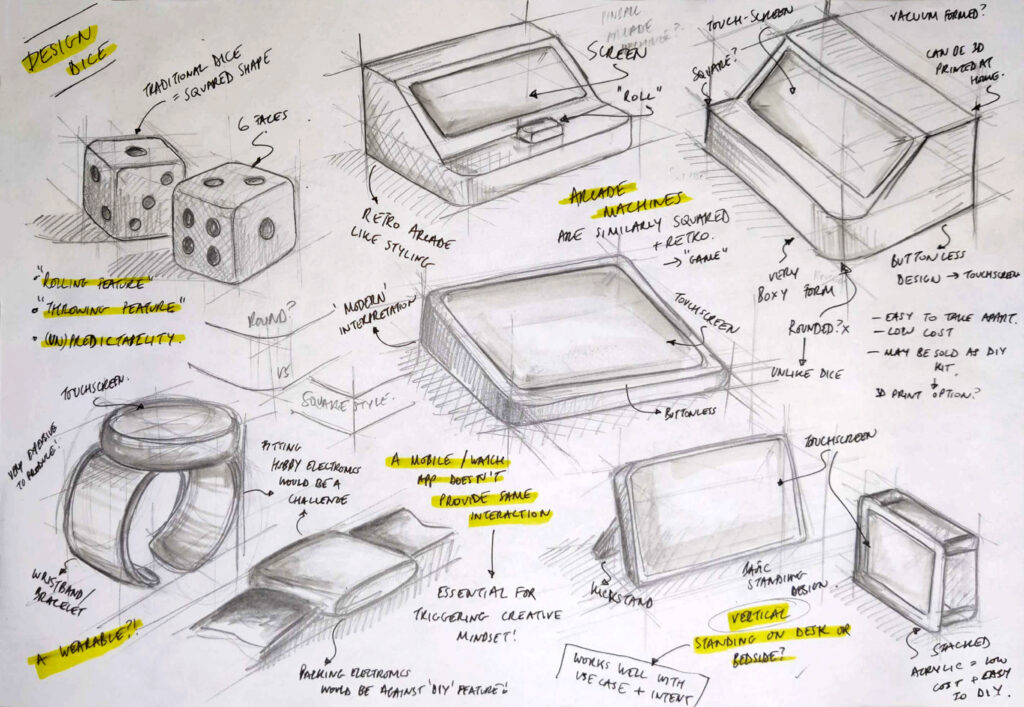
I did consider a wearable device such as a bracelet so that it could be used anytime of the day. However, I quickly realised this would be challenging to fit hobby electronics into! Other concepts included a single button or touchscreen to ‘ROLL’ the electronic dice and generate a prompt.
My final concept is based on the sketch below.
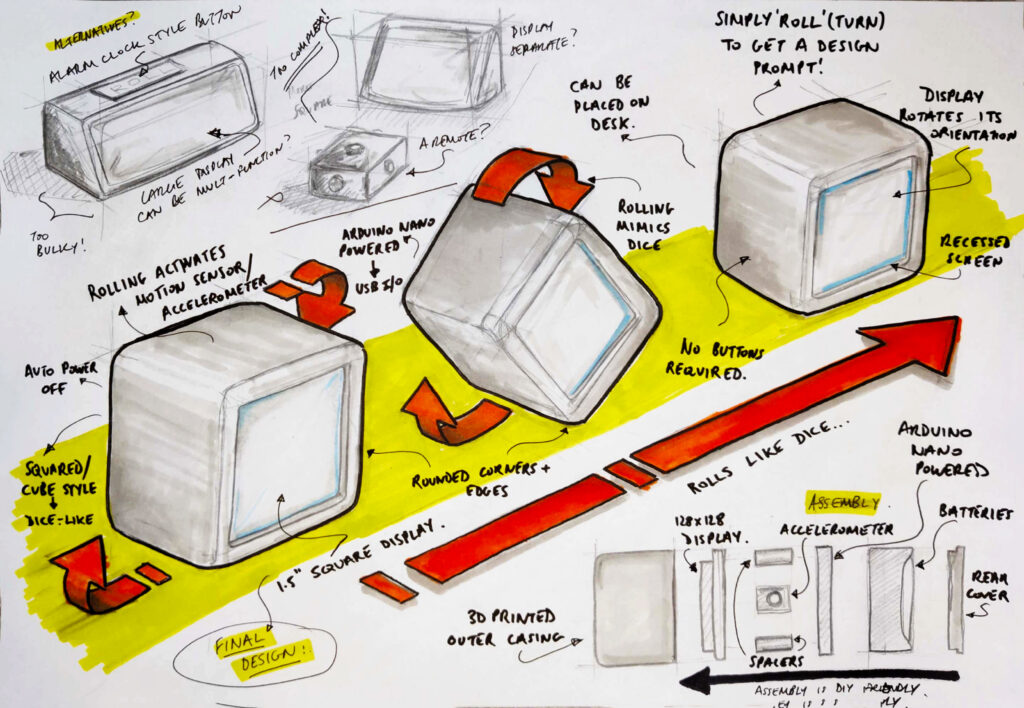
This satisfied my requirements and features as follows:
– A cube shape to mimic a traditional die.
– No buttons or touchscreen for input. Rather, human interaction is through rolling the device like a die. An accelerometer would sense this movement and trigger the device to wake from sleep and display a prompt. The device would then sleep / power off after a fixed interval when no movement is sensed through the accelerometer.
– Easy to produce at home using hobby electronics and 3D printed housing.
– Battery powered and convenient to keep on a desk.
I then began prototyping the electronics for the device, albeit on a breadboard to check feasibility of the idea. I was able to achieve the intended outcome by using an arduino nano connected to a 1.5 inch OLED display. An accelerometer can be added in further iterations of the prototype.
This proof of concept worked exceptionally well and was easy to program. It was able to randomise the words and generate a prompt. Overall, the solution is extremely low cost (<$15) and can be easily packaged into a compact housing. The square display enables it to rotate orientation according to the accelerometer and remain the ‘right way up’ when showing the prompt.
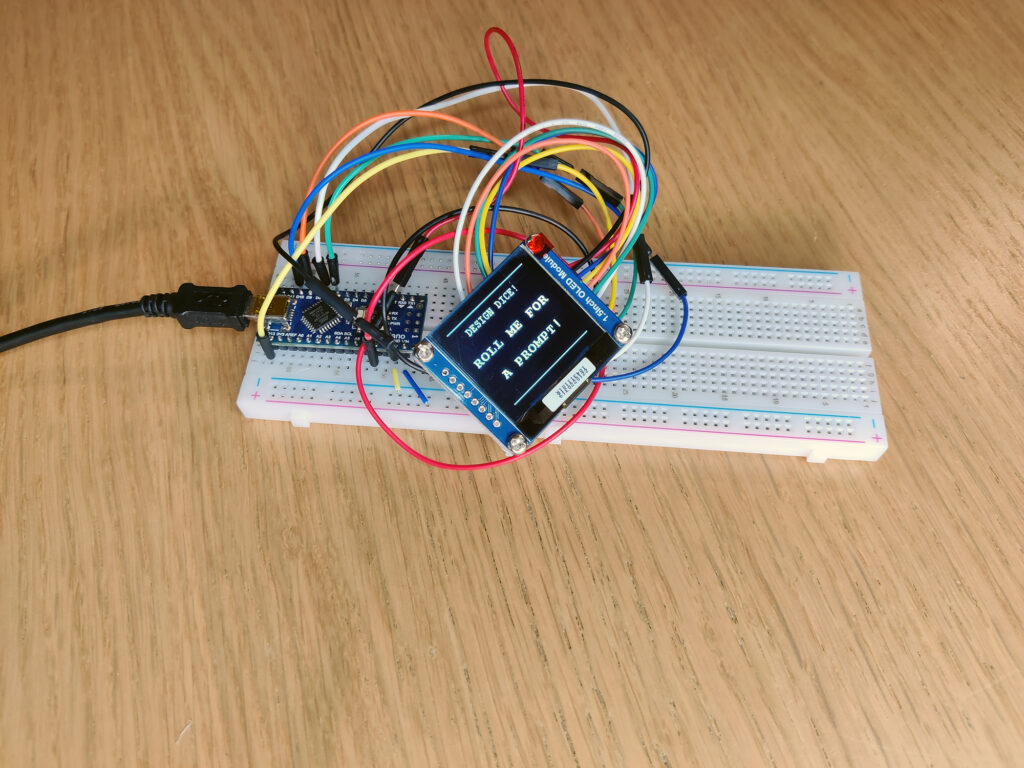
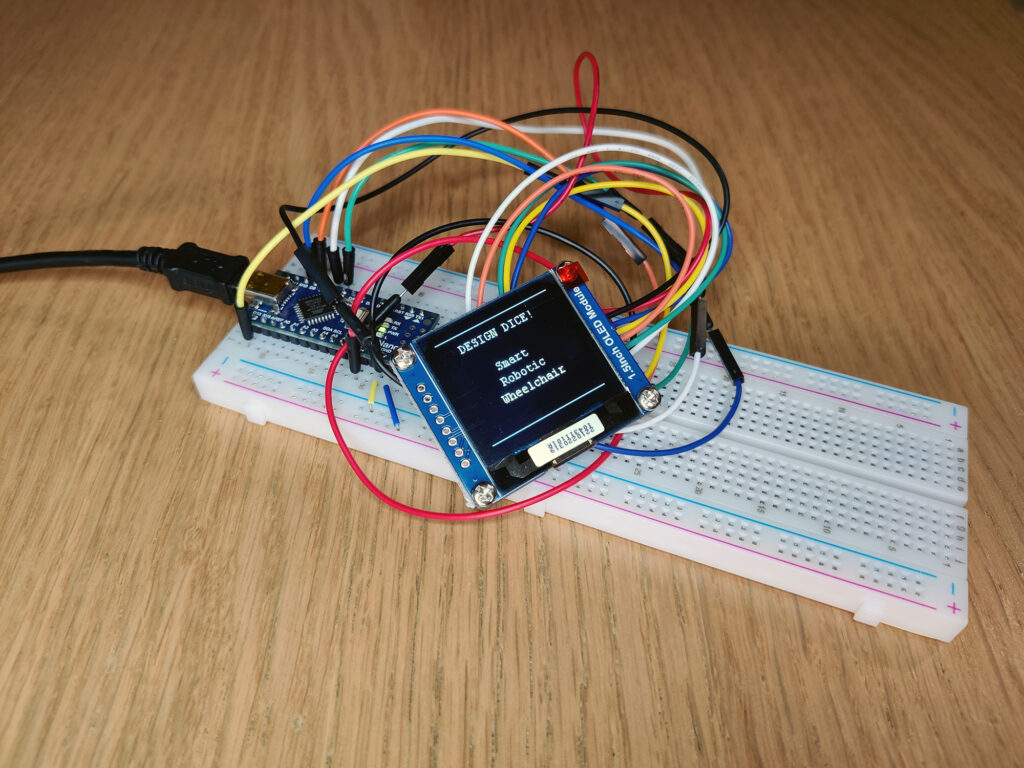
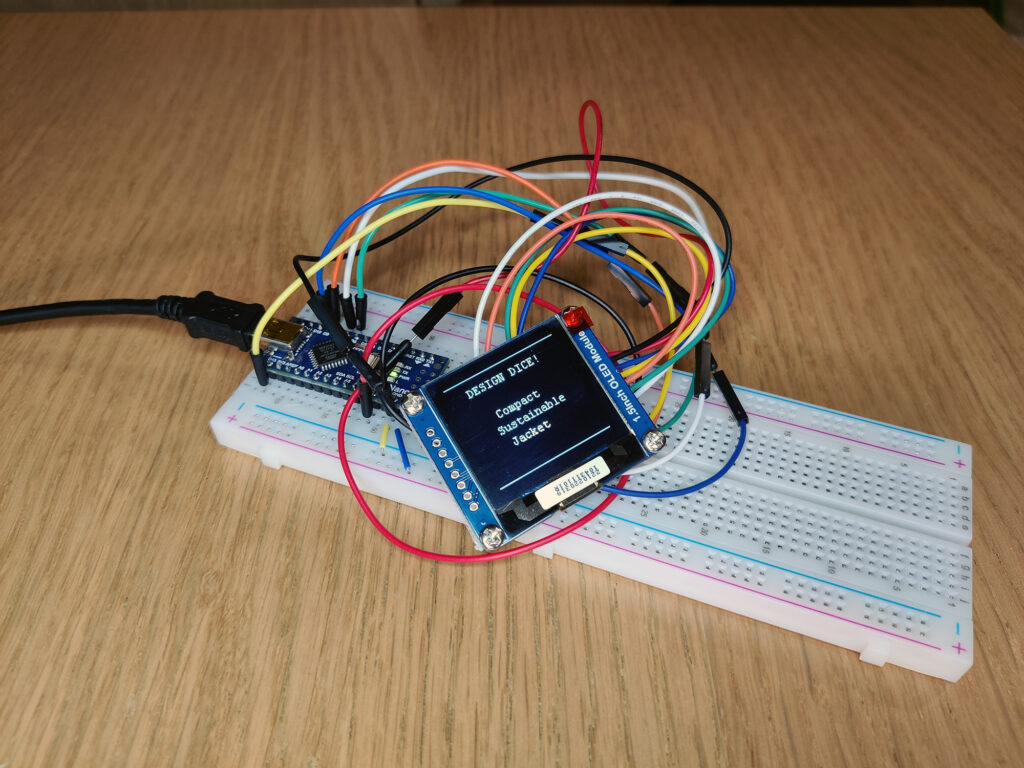
Design Prompts Sample:
Below is a sample of the prompts that the design dice was programmed to show. These can be changed easily from the Arduino code and are individually randomised when displayed (unlike below). The rolling motion of the device begins the randomise process and each of the 3 words are picked from a word bank.
Impact resistant ,Underwater ,Portable , Compact , Smart , Carbon Neutral
Waterproof ,Robotic ,Sustainable ,Eco-friendly ,Renewable ,Rechargeable
Torch ,Wheelchair ,Jacket ,Vehicle ,Phone ,Umbrella
These can equally be changed to (more ‘realistic’) prompts or anything else the user chooses!
Reflection:
The prompts are intentionally silly! These are products that are unlikely to be feasible in reality, but it satisfies the problem extremely well! The whole point of the product is to provide a recreational activity and to provide a ‘what if (?)’ thought process. For me, designing such products without the boundaries and limitations we face on real world problems is highly effective in getting me to put on my creative thinking hat.
Looking ahead, I hope to develop this prototype with a 3D printed housing and iterate the design further. Future iterations may add further functionality such as using the device as desk clock when not being rolled for a prompt.
Skills developed:
Design sketching, brainstorming, thinking on paper, prototyping, electronics, programming, versioning, problem solving, human-centered design process